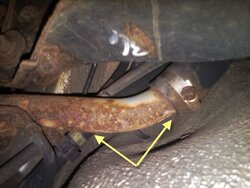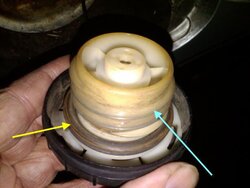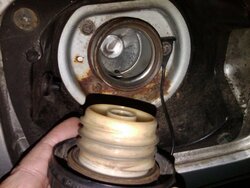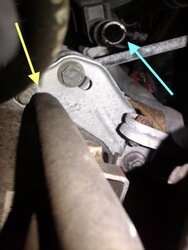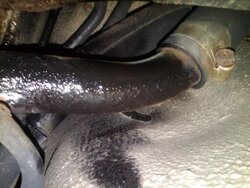Hello
This is the printout from AutoZone for a 1999 4 Door Wagon Subaru Legacy 4 Cylinder
There was an exhaust leak but that was fixed. The code was reset and then the light came back on after 25 miles when the car was on the highway going 60 MPH
Does anyone know what the fix might usually be?
Was it a rusted Gas Filler Tube and how was it fixed?
Tue Apr 12 20:46:49 2011
AutoZone'#5028
517 S BROADWAY
SALEM, NH 03079
OEM Number to Cross: P0440
CATALOG PART. PRICE
WARRANTY CORE
Troubleshooting P0440
OEM Brand: Domestic
0.00
Definition
EVAP (evaporative emission system) small leak/no
flow condition
Explanation
The evaporative emission system is monitored for
it's ability to hold vacuum.
Probable Cause
1.- Defective or loose fuel cap
2.- EVAP canister or hose cracked-not connected
3.- Purge or vent solenoid defective
4.- Vacuum leak at engine
Prices and availability are subject to change
THIS IS NOT A RECEIPT
Gas Vapor Check on Key start Video
You tube video on this error http://www.youtube.com/watch?v=7IX_lxYDAA0
http://www.youtube.com/watch?v=7IX_lxYDAA0
A Subaru Tech stated that 95% of the time, this error is caused by a rusted up Gas Tank Filler Tube
See Video http://www.youtube.com/watch?v=_T-Bjp8_rgw
http://www.youtube.com/watch?v=_T-Bjp8_rgw
Many problems are do to the LDP (Leak Detection Pump) vacuum pump solenoid, but a small leak can be in a rusty gas tank filler neck!
http://wn.com/EVAP_System_Operation << This video shows Subaru EVAP system with LDP
This is the printout from AutoZone for a 1999 4 Door Wagon Subaru Legacy 4 Cylinder
There was an exhaust leak but that was fixed. The code was reset and then the light came back on after 25 miles when the car was on the highway going 60 MPH
Does anyone know what the fix might usually be?
Was it a rusted Gas Filler Tube and how was it fixed?
Tue Apr 12 20:46:49 2011
AutoZone'#5028
517 S BROADWAY
SALEM, NH 03079
OEM Number to Cross: P0440
CATALOG PART. PRICE
WARRANTY CORE
Troubleshooting P0440
OEM Brand: Domestic
0.00
Definition
EVAP (evaporative emission system) small leak/no
flow condition
Explanation
The evaporative emission system is monitored for
it's ability to hold vacuum.
Probable Cause
1.- Defective or loose fuel cap
2.- EVAP canister or hose cracked-not connected
3.- Purge or vent solenoid defective
4.- Vacuum leak at engine
Prices and availability are subject to change
THIS IS NOT A RECEIPT
Gas Vapor Check on Key start Video
You tube video on this error
 http://www.youtube.com/watch?v=7IX_lxYDAA0
http://www.youtube.com/watch?v=7IX_lxYDAA0A Subaru Tech stated that 95% of the time, this error is caused by a rusted up Gas Tank Filler Tube
See Video
 http://www.youtube.com/watch?v=_T-Bjp8_rgw
http://www.youtube.com/watch?v=_T-Bjp8_rgwMany problems are do to the LDP (Leak Detection Pump) vacuum pump solenoid, but a small leak can be in a rusty gas tank filler neck!
http://wn.com/EVAP_System_Operation << This video shows Subaru EVAP system with LDP


